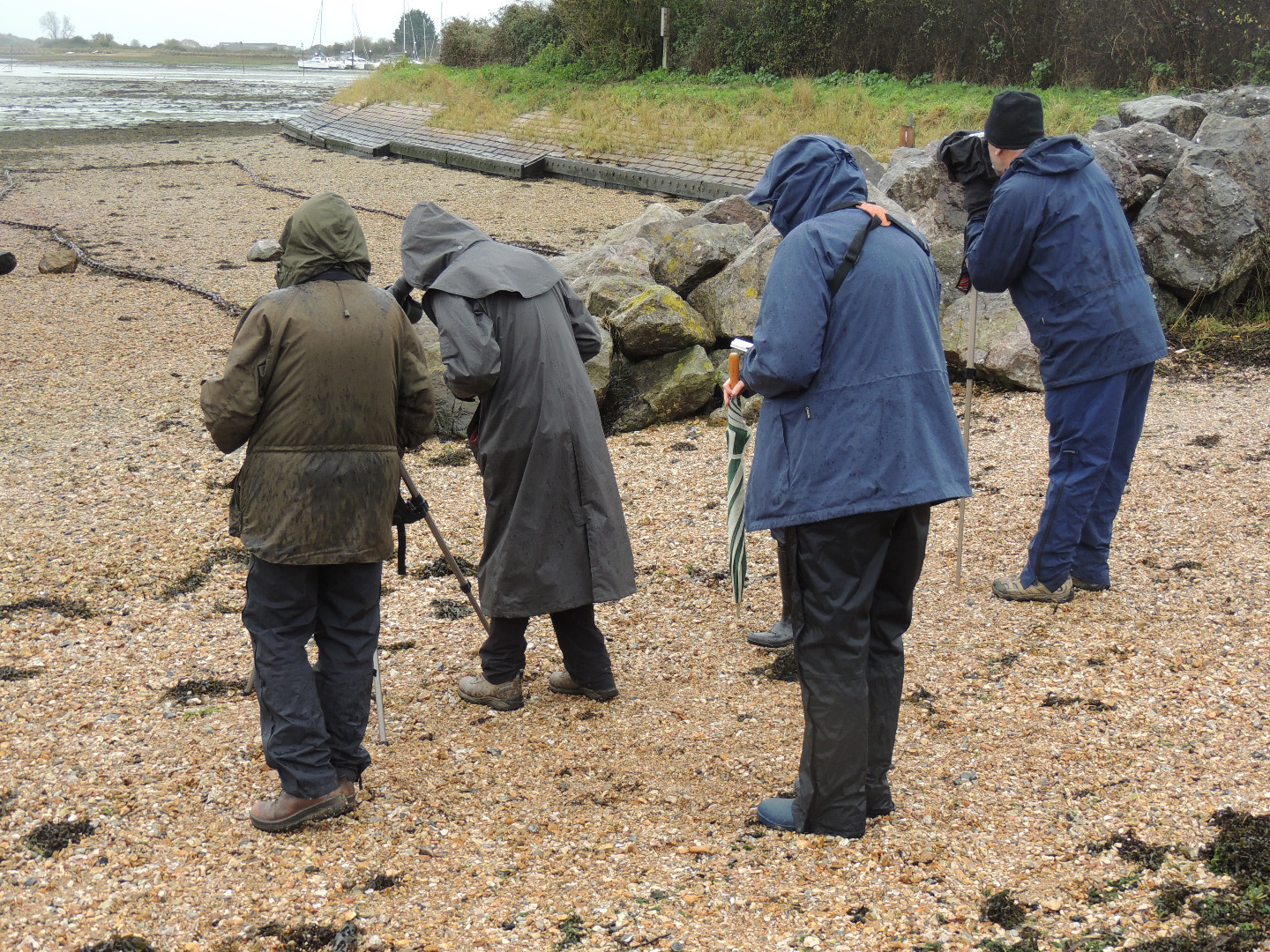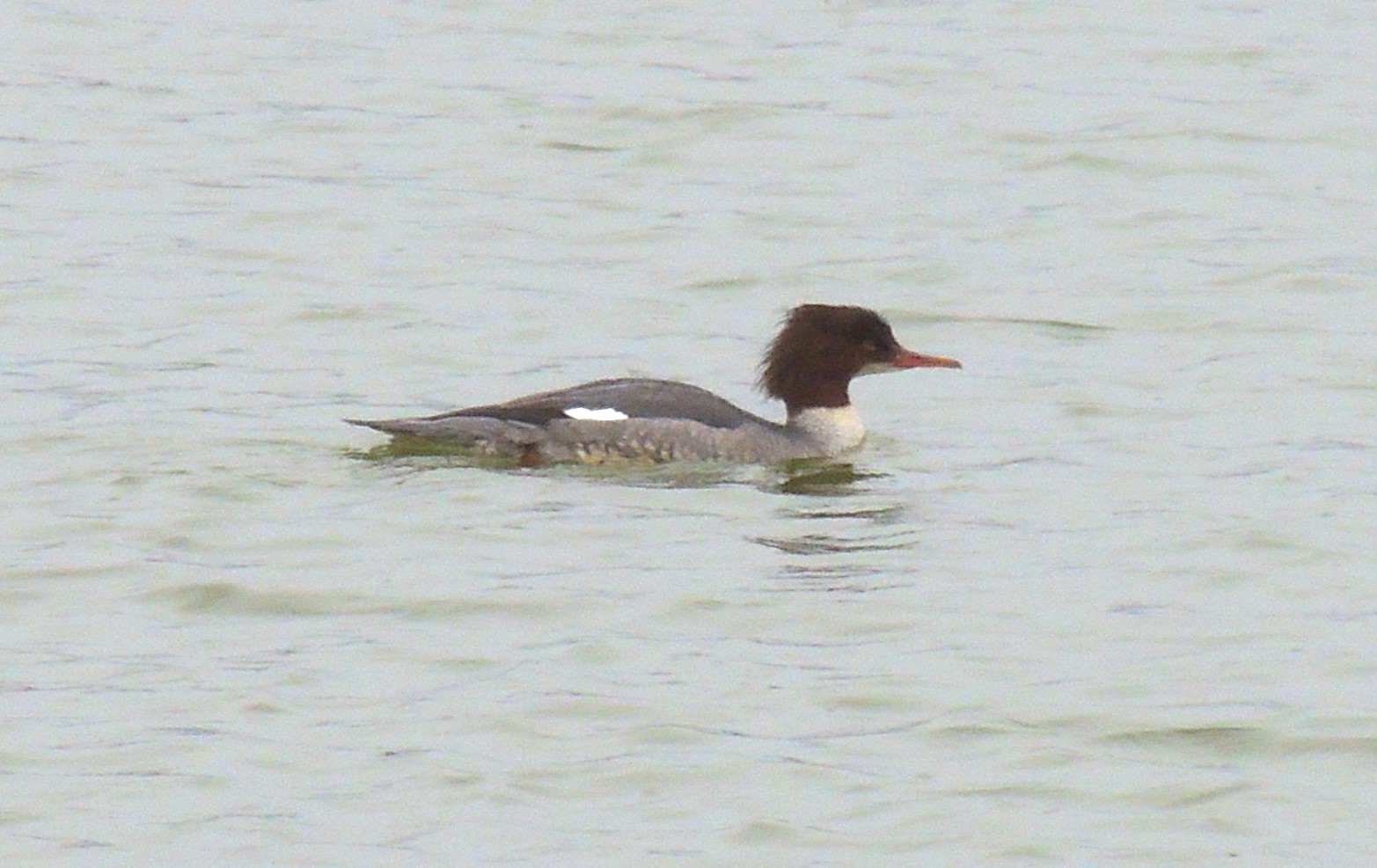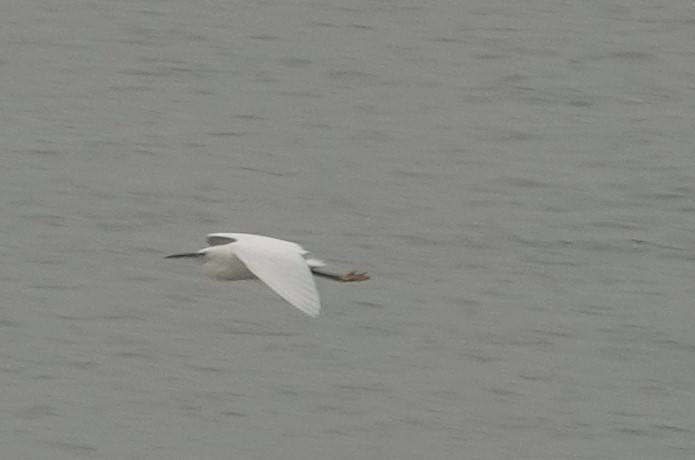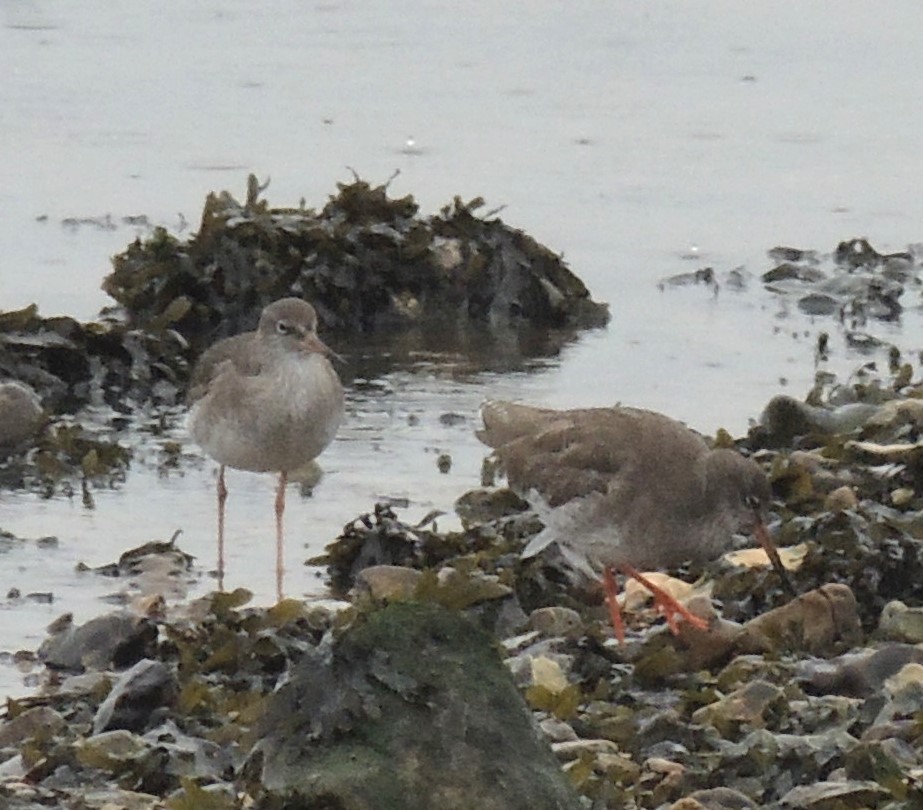Thursday 16th November 2023 Nutbourne & Prinsted Marsh Leader: Diana Zeuner
Six brave souls met in the car park at Prinsted during the very wet weather we have been experiencing recently, and fully-clad in waterproofs, set forth to walk the sea wall on a there and back basis (the fields inland being very muddy).
The tide was coming in, but some way out there were plenty of birds busy taking advantage of the revealed mud. They included groups of Brent Geese, many Dunlin, several Grey Plover, a Greater Black-backed Gull, Mute Swan, Shelduck and a Curlew, and nearer the shore, Oyster Catchers, Redshank, Ringed Plover and Turnstones. We also saw from this area Great Crested Grebe and Little Egret.
We battled against the rain eastwards, accompanied by three Redshank at the strand line, and noting in the first hedged area Blackbird, Sparrows, and Stonechat. A Buzzard flew up into an oak tree, and other birds seen were Thrush, Robin, Mallard and Carrion Crow.
Reaching the site of the old mill area, the tide was already well in. New birds here were Lapwing and Wigeon. As we took the path towards Nutbourne to check the marshy area, the fields held a busy mixed flock of Redshank, Oyster Catcher, Grey Plover, Redwing and Ringed Plover. A Kestrel swept in but came away empty-handed. From the path there were many Moorhen and Teal, as well as Mallard, but sadly no Snipe.
On our return to Prinsted we heard Cetti’s Warbler, saw a wonderful charm of Goldfinch over a patch of brambles, and finally a real treat with two Red-breasted Merganser, possibly this year’s young, judging by their paler colouring.
We arrived back at the car park somewhat soggy, but after quite a successful venture!
Diana Zeuner

ChiNats members. (Photo Linda Kelsall-Barnett)

Red-breasted Merganser. Photo: Linda Kelsall-Barnett

Little Egret. Photo: Christian Hance

Redshank. Photo: Linda Kelsall-Barnett